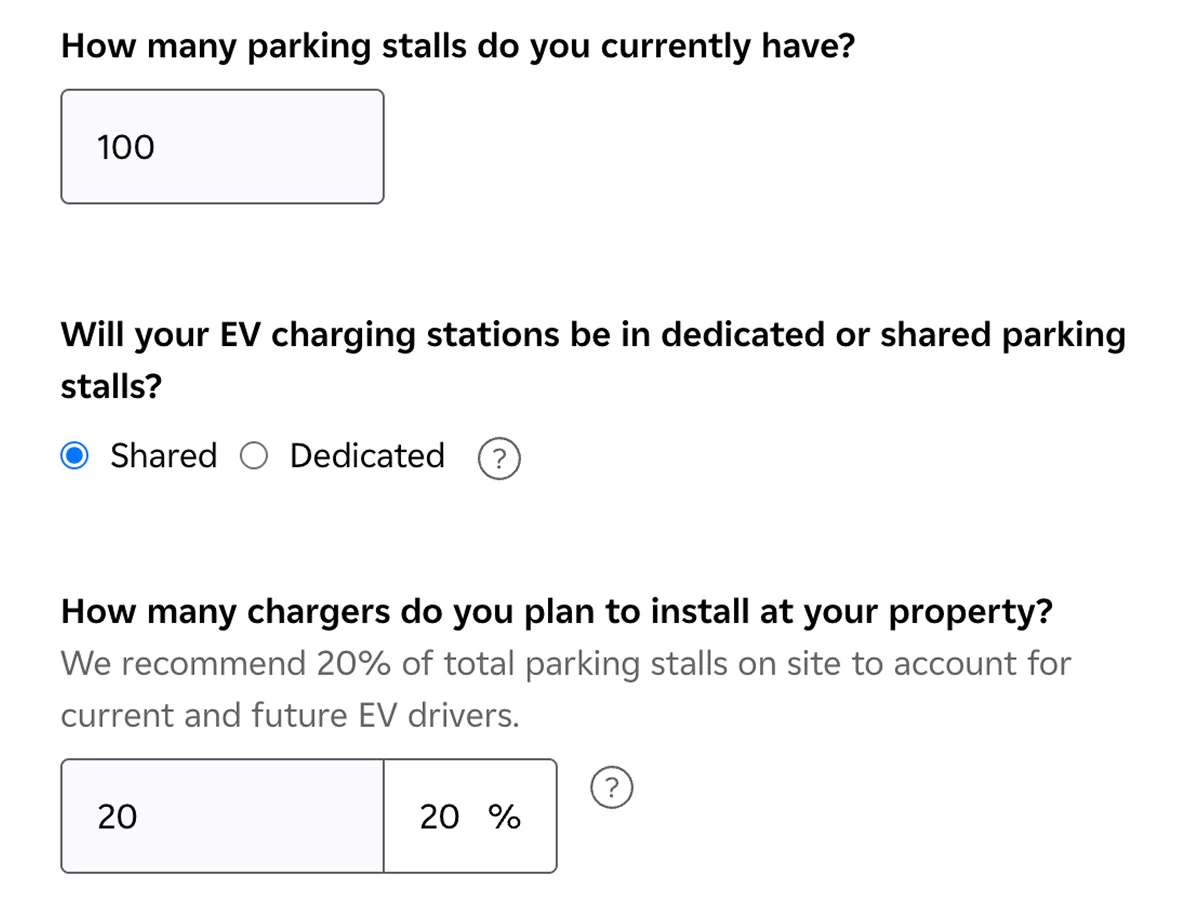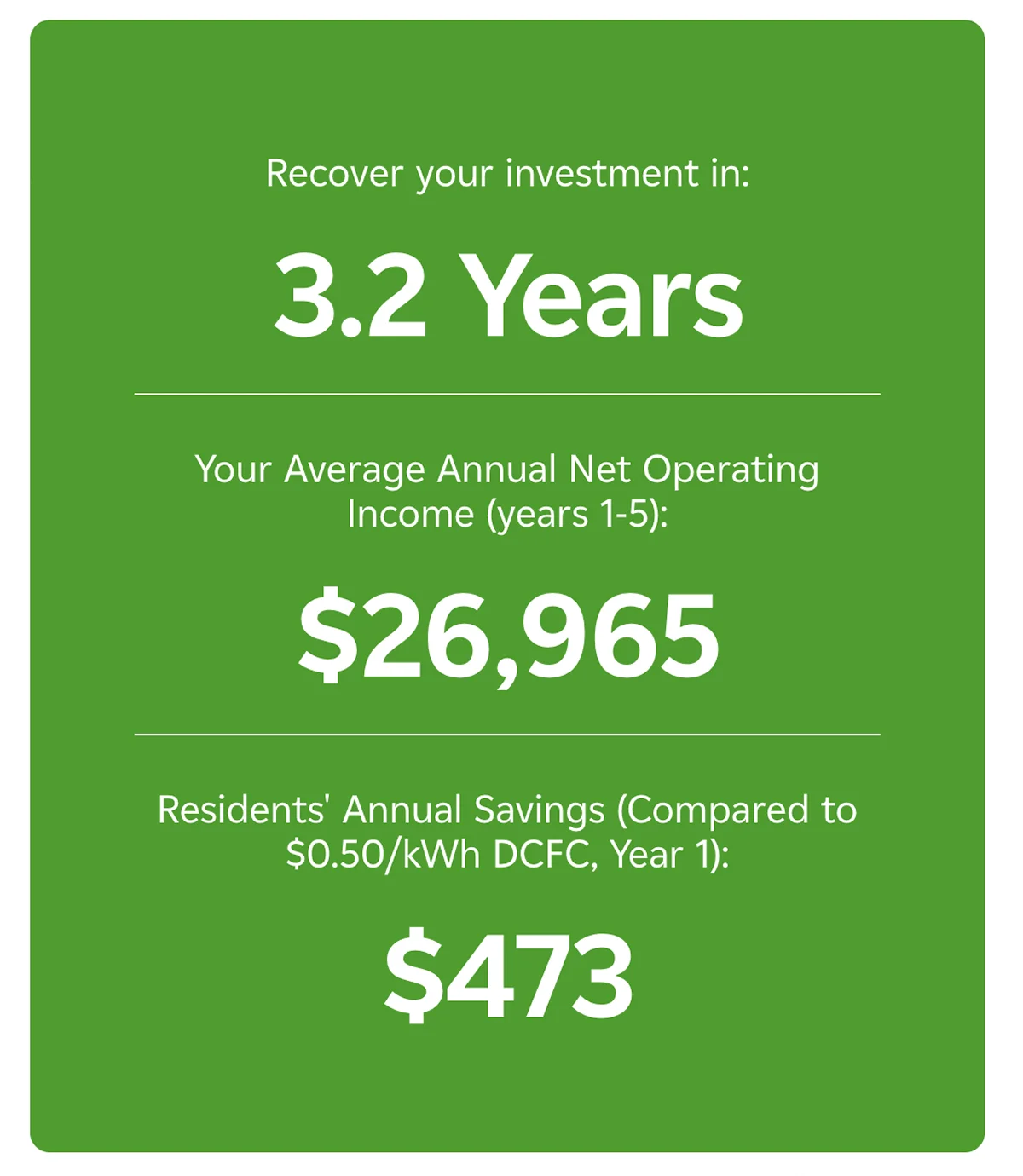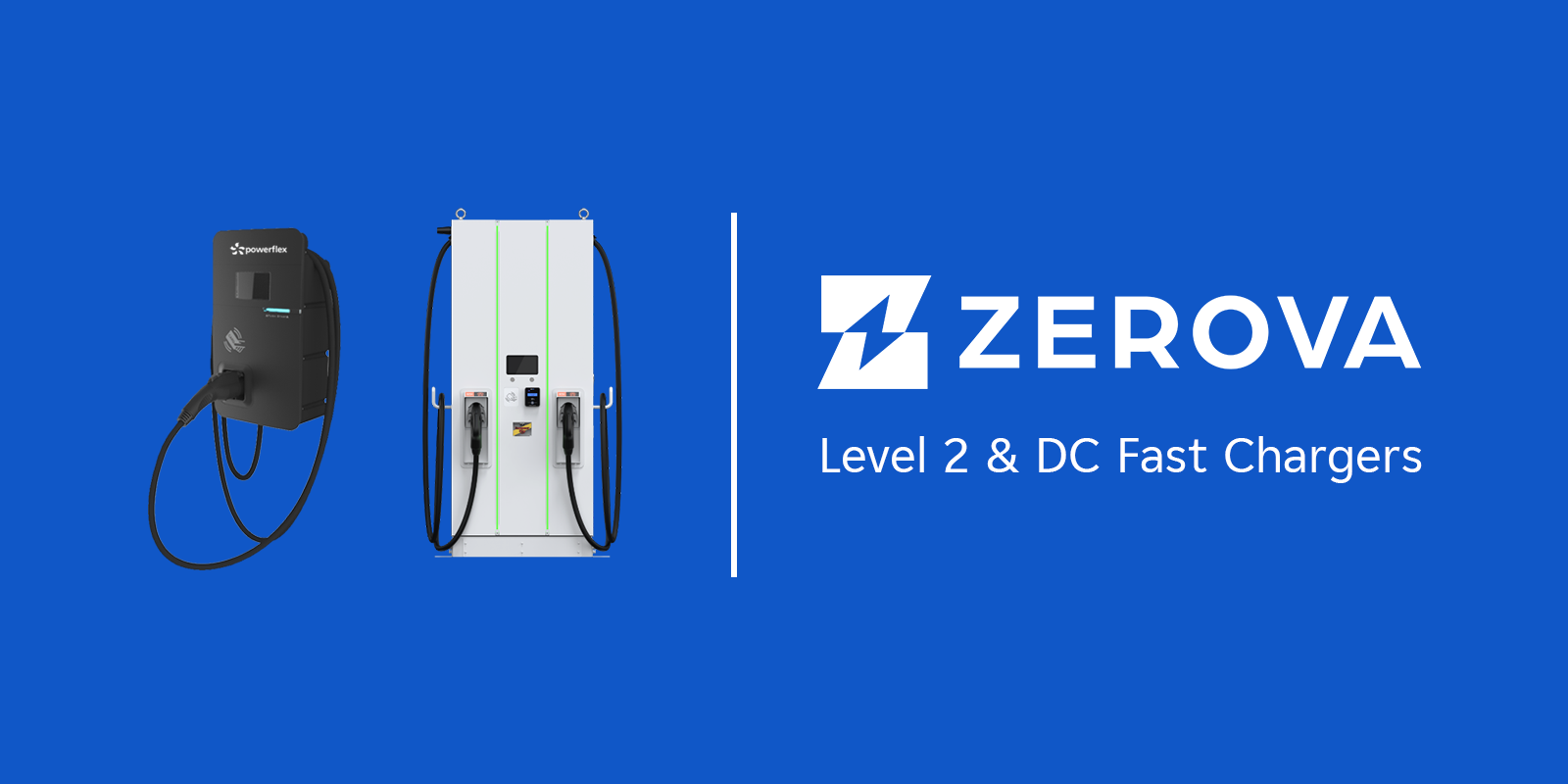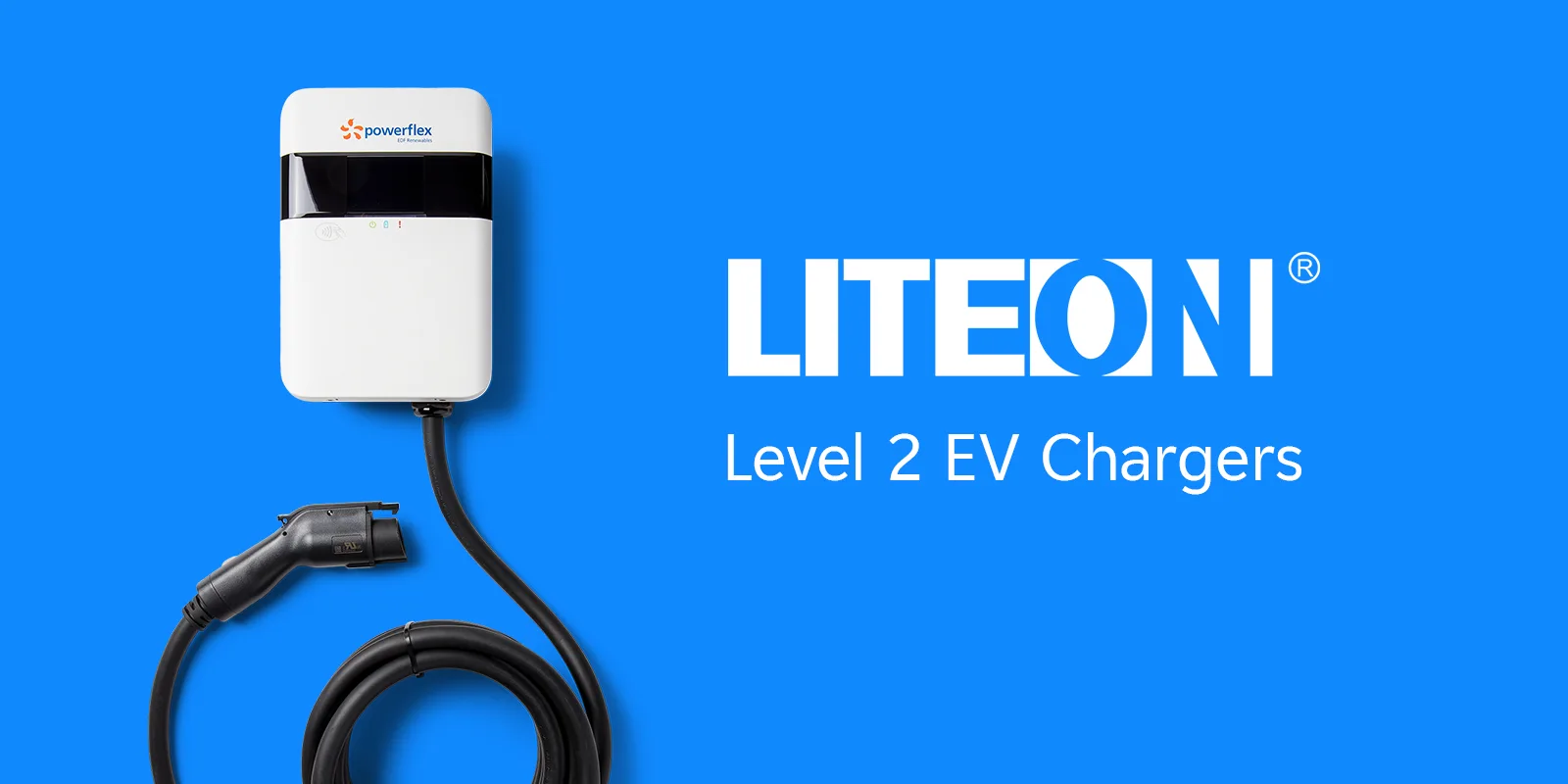How to Calculate the ROI of EV Charging (and Why It Matters)

Electric vehicle (EV) charging is no longer just a “nice-to-have” amenity for commercial properties; it’s fast becoming essential infrastructure. As more drivers make the switch to electric, tenants and customers increasingly expect charging options at the places they live, work, and shop.
But for property owners and managers, one big question remains: What’s the financial return on installing EV charging stations? With so many variables, it can be tough to know when the investment will pay off.
That’s where PowerFlex's EV Charging ROI Calculator comes in. This free tool helps you cut through the complexity and see, in real numbers, what EV charging could mean for your bottom line. Let’s explore the ROI of EV charging in more detail and see how you can use the calculator to your advantage.
Why ROI Matters for EV Charging Investments
Return on investment (ROI) is a familiar concept, but in the context of EV charging, it’s about much more than just recouping your initial costs. A well-planned EV charging installation can increase your property’s value, attract and retain tenants, and even open up new revenue streams.
Several key factors impact the ROI of EV charging:
- Upfront costs: This includes the price of the charging hardware, installation, and any necessary electrical upgrades.
- Incentives and tax credits: Federal, state, and utility programs can significantly reduce your out-of-pocket expenses.
- Utilization rates and user fees: The more your chargers are used, and the more you can charge for access, the faster you’ll see a return.
- Impact on property value: EV charging can boost property values by up to 15%, according to the Urban Land Institute.
Failing to understand your ROI can mean missing out on valuable incentives, over- or under-investing in infrastructure, or losing your competitive edge as EV adoption accelerates. In short, a data-driven approach is essential.
Common Questions About EV Charging ROI
If you’re considering EV charging for your property, you probably have a slew of questions surrounding your ROI outlook. Here are some of the most common ones:
What incentives are available?
There are federal, state, and utility programs that can offset initial costs and put you in a better position for future returns. Check out the PowerFlex Incentives Hub to see what you might qualify for.
Can I generate revenue from charging?
Absolutely. There are a number of direct and indirect ways to earn revenue from EV charging. Most commonly, you can charge drivers fees based on how much energy they use, measured in kilowatt-hours.
How do shared vs. dedicated chargers affect payback?
Shared chargers (used by multiple drivers) typically see higher utilization, which means more charging revenue and a faster return on investment.
How do energy costs impact returns?
Electricity costs can play a part in delaying returns, however, there are several smart strategies to mitigate this. For one, baking a markup into your charging fee can offset your energy expenses. You can also consider adding additional clean technologies on site like solar panels to generate your own electricity and help power your chargers.
How long does it take to break even?
The answer depends on your unique situation. That’s why PowerFlex’s EV Charging ROI Calculator is so valuable — it crunches the numbers for you.
Using PowerFlex’s EV ROI Calculator
The PowerFlex EV Charging ROI Calculator is designed for property managers, fleet operators, sustainability teams, and anyone considering EV charging for their site. It takes the guesswork out of the equation by providing a clear, data-driven estimate of your potential returns. Getting started is simple:
- Enter your property details
Start with your number of parking spaces, how many chargers you plan to install, and whether they’ll be shared with the public or reserved for tenants/employees. You’ll also be asked to estimate how many of your tenants currently drive EVs.
- Input your costs and fees
You’ll need your per-kilowatt-hour electricity rate (check your utility bill) and an idea of what you’ll charge drivers to use the stations. Remember, setting your charging fee slightly higher than your electricity rate can put you on a quicker path to ROI.

- Review your results
The calculator will show you when you can expect to achieve payback on your EV charging system. It also displays your average net operating income (NOI), a key metric for property owners. NOI is the income generated from your charging stations after operating expenses, but before taxes and financing costs (learn more).

- See your impact
The tool also estimates how much money you’ll save your residents, tenants, or employees by offering onsite charging, an added value that can help with retention and satisfaction.
- Test different scenarios
Lastly, you can see how adjusting inputs like adding more chargers or leveraging additional incentive funds may affect your ROI outlook by going back and editing the appropriate fields. The calculator output changes in real time as you make changes.
Try PowerFlex’s EV Charging ROI Calculator Now
Curious about the potential returns on your EV charging project? Try PowerFlex’s EV Charging ROI Calculator right now and see your savings in minutes. And once you get your results, click the “Talk to an expert” button to have your data validated by a knowledgeable PowerFlex EV charging representative, go over your projected returns in detail, and start planning your EV charger installation.



